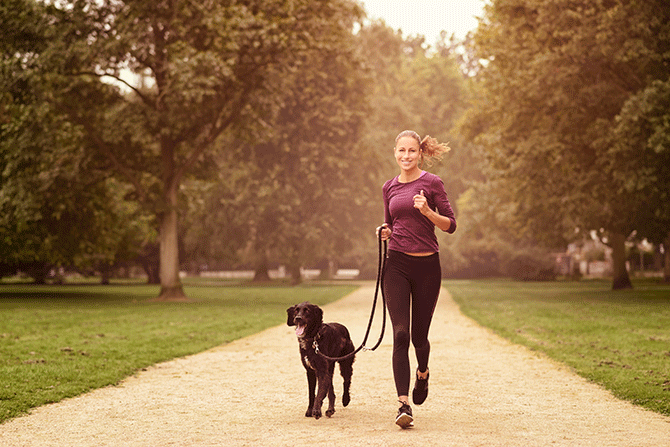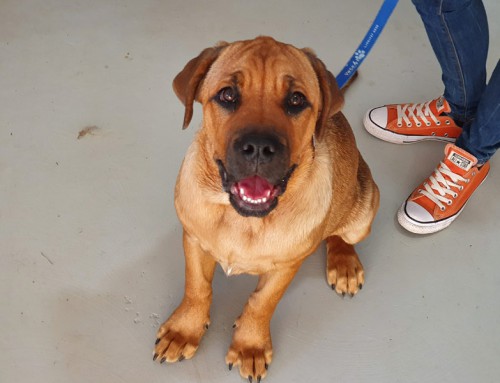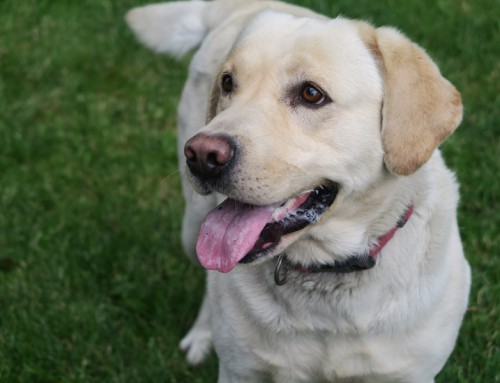We’re now well into a new year, and you’ve hopefully managed to keep up with the resolutions you made at the end of the last one. Resolutions don’t necessarily have to be just for you, however. How about some resolutions for your dog? Exercise is vital for a dog’s health as well as its behaviour. A tired dog is a good dog, so it’s crucial that you have a solid exercise regime in place to keep your dog fit and well-behaved.
Not to mention that exercising with your dog leads to better fitness for you, since you’ll be working out right alongside them! This is the first of a three-part series on exercising with your pet, and this time around we’ll talk all about setting, planning, and achieving exercise goals for your pet.
1. Set attainable goals
The goals you set for your exercise regime should be attainable. If you try to reach too high too soon, you could be setting yourself up for failure. No matter what type of exercise you choose for yourself and your dog, start small and build it up. If you start with a 20 minute walk, do that for a couple of weeks before you try going for a half hour stroll. You don’t want to tire out or injure your dog if they’re not used to physical activity (or yourself!)
Your goals should also be based on your dog’s age, fitness level, and size. An older dog or puppy cannot keep up exercise for as long as an adult or adolescent dog, for example. Puppies in particular have softer bones, making jumping and other exercise that impact the joints not the most ideal form of exercise for them. Smaller dogs also have smaller legs that are not built for speed and long distance, so be aware of these things before devising an exercise goal.
2. Think about the purpose of exercising
When setting exercise goals for your pet, it’s important to keep in mind why you’re wanting them to exercise. Are you increasing your dog’s regimen for weight loss purposes? Is it for behavioural issues? Perhaps you want your dog to exercise so it can encourage your own personal fitness or weight loss goals.
If you want your pet to exercise for their own weight loss, first talk to a veterinarian to determine the healthy and ideal weight for your dog, and set that as a goal. If the goal is to lose 5 kilograms, then work towards that number and then re-evaluate both of your needs going forward. You can also set goals based on your dog’s endurance or agility, or for recovery after an injury or health issue.
The exercises on which you choose to focus on will depend on these goals, so be sure to outline a purpose behind your dog’s exercising before you begin.
3. Motivation and planning
Planning and motivation go hand-in-hand. You’ll be better able to keep up with your motivation if you’re well organised and have things planned ahead of time. It’s not easy to make changes in your lifestyle, and it may not be easy on your dog either.
Figure out what time of day is best for taking your dog out. For many people, it’s in the morning before going to work or school. That way your dog can get some exercise before potentially having the rest of the day to relax while waiting for you to come home. If you try and figure things out as you go along, you may be setting yourself up for failure as you’ll inevitably miss a day of training when something unexpected comes up. THis can be frustrating and sometimes causes people to give up altogether.
Motivating yourself is a lot easier once you have things properly planned out. You’ll know when your scheduled time to exercise is, so it’s simply a matter of setting that time aside each day. Inward motivation should come from the fact that you’re doing something to improve your dog’s health, and potentially your own. We want our dogs to live as long as happily as possible, and exercise can really help with that!
4. Don’t forget about diet
All that hard work could end up being for nothing if your dog isn’t eating the right food! Talk to your vet about what food is most appropriate for your dog’s size, age, and breed. It’s vital to give your pooch the fuel it needs in order to succeed. If your aim is for your dog to lose weight, make sure to limit table food and feed only the recommended amounts. You can put away the food bowl after feeding to prevent your dog from asking at the bowl. Poor feeding and eating habits can easily undo all the good from exercising.
Resolving to improve your dog’s health and fitness might feel like a daunting task, but it doesn’t have to be. With a little preparation and an understanding of your dog’s needs, you’ll be set up for success. Stay tuned for Part 2 to continue you and your dog’s journey to better health!







Leave A Comment